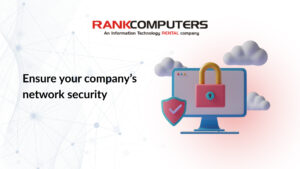In a world where technology drives business and disruption is a constant companion, having a solid Disaster Recovery Plan (DRP) is no longer a luxury—it’s a necessity. Picture this: a cyberattack strikes, a crucial server crashes, or a natural disaster disrupts operations. The fallout from such events can be catastrophic, leading to data loss, downtime, and financial strain.
However, every challenge presents an opportunity, and that’s where IT rental services come into play. Think of them as a safety net for your DRP – flexible, scalable, and ready to deploy when the unexpected occurs.
In this guide, we will discuss how to integrate IT rental services into your disaster recovery strategy seamlessly. We’ll guide you through the steps, from understanding disaster recovery essentials to selecting the right rental partner and conducting essential drills. By the end, you’ll understand how this integration not only enhances your disaster preparedness but also offers cost-effective advantages, ensuring your business sails through disruptions with confidence.
Understanding Disaster Recovery Plans
A disaster recovery plan outlines how an organisation will respond and recover from potential disruptions to its IT systems and data.
It is a strategic imperative for any organization aiming to ensure business continuity in the face of unexpected adversities. Such adversities can range from severe weather events to targeted cyberattacks, each capable of causing substantial downtime and data loss. For modern businesses heavily reliant on digital operations, the impact of prolonged downtime can be catastrophic, resulting in financial losses, reputational damage, and loss of customer trust.
By having a well-defined plan in place, you can significantly reduce the time it takes to recover your IT systems and data, thus mitigating the negative impact on operations, customers, and stakeholders.
The Role of IT Rental Services
IT rental services provide businesses with access to a wide range of IT equipment on a temporary basis. These services align perfectly with the core objectives of a disaster recovery plan. The primary goals of a disaster recovery plan are to minimize downtime, recover critical data, and restore normal business operations as swiftly as possible. IT rental services contribute to these goals in the following ways:
- Rapid Response: In the aftermath of a disaster, time is of the essence. IT rental services offer a quick and efficient solution to replace damaged or compromised equipment, ensuring that operations resume without delay.
- Flexibility: Disaster recovery scenarios can vary widely, requiring different types of IT equipment. IT rental services enable businesses to tailor their equipment selections based on specific needs, ensuring a more effective recovery process.
- Scalability: Some disasters might necessitate a sudden increase in computing power or networking capabilities. IT rental services allow organizations to scale up or down as needed, avoiding the underutilization or insufficient capacity of owned equipment.
- Cost-Effectiveness: IT rental services help businesses avoid the hefty upfront costs associated with purchasing IT equipment. This aligns well with the financial goals of disaster recovery planning, where cost efficiency is crucial.
Integrating IT Rental Services into Your Disaster Recovery Plan
When it comes to integrating IT rental services into your disaster recovery plan, a systematic approach ensures a seamless transition and effective utilization of rented equipment. Follow these steps to ensure a successful integration:
Assessment and Analysis
An assessment of your IT infrastructure will guide your decisions regarding the type and quantity of IT equipment needed from the rental service.
- Assessing Your IT Rental Needs: The first step in integrating IT rental services is to assess your organisation’s specific IT rental needs. This involves evaluating your existing IT infrastructure, identifying critical systems and applications, and determining the equipment and resources that would be required in the event of a disaster.
- Evaluate Existing IT Infrastructure: Take stock of your organisation’s current IT infrastructure, including servers, networking equipment, computers, and peripherals. Determine the quantity and specifications of the equipment to ensure that your IT rental provider can meet your requirements.
- Determine Equipment and Resource Requirements: Based on the critical systems and applications identified, determine the equipment and resources that would be needed for their recovery. This could include servers, storage devices, networking equipment, and desktop computers. Consider factors such as processing power, storage capacity, and connectivity requirements.
Selecting the Right IT Rental Provider
Choosing the right IT rental provider is crucial to ensure a seamless integration of rental services into your disaster recovery plan. Consider the following factors when selecting a provider:
- Experience and Expertise: Look for a provider with extensive experience in disaster recovery and IT rentals. They should have a proven track record of delivering reliable and high-quality rental equipment and services.
- Range of Rental Equipment: Ensure that the provider offers a wide range of rental equipment to meet your specific needs. This includes servers, networking equipment, storage devices, desktop computers, laptops, and peripherals.
- Scalability and Flexibility: Your IT rental provider should be able to scale their services based on your requirements. They should offer flexible rental terms and be able to quickly provide additional equipment if needed.
- Support and Maintenance: Consider the level of support and maintenance provided by the rental provider. They should offer 24/7 technical support, on-site assistance if required, and regular maintenance of the rental equipment.
- Security and Data Protection: Ensure that the rental provider follows strict security protocols and has measures in place to protect your data. This includes secure data erasure and disposal procedures when the rental equipment is returned.
Incorporating IT Rental Services into Your Recovery Strategies
Once you have selected the right IT rental provider, it’s time to incorporate their services into your recovery strategies. This involves defining the roles and responsibilities of the rental provider, establishing communication channels, and integrating their equipment and resources into your recovery plans.
- Define Roles and Responsibilities: Clearly define the roles and responsibilities of both your organisation and the IT rental provider during a disaster. This includes specifying who will be responsible for coordinating equipment delivery and setup, managing the rental equipment during the recovery process, and ensuring its return once normal operations resume.
- Establish Communication Channels: Establish effective communication channels with the rental provider to ensure seamless coordination during a disaster. This could include dedicated contact persons, emergency hotlines, and regular updates on equipment availability and delivery timelines.
- Integrate rental equipment into recovery plans: Update your recovery plans to include the rental equipment provided by the IT rental service. Specify the procedures for deploying the equipment, connecting it to your network, and ensuring its compatibility with your existing systems and applications.
Conducting Timely Disaster Drills and Maintenance
Regular disaster drills and maintenance are essential to ensure the effectiveness of your disaster recovery plan, including the integration of IT rental services. These activities help identify any gaps or issues in your plan and allow you to fine-tune your processes.
- Disaster Drills
Conduct regular disaster drills to simulate different disaster scenarios and test the response and recovery capabilities of your organisation . During these drills, involve the IT rental provider in setting up and testing the rental equipment to ensure its seamless integration.
- Equipment Maintenance
Regularly maintain and test the rental equipment provided by the IT rental service to ensure its reliability and functionality. This includes conducting routine maintenance, updating software and firmware, and replacing any faulty or outdated equipment.
Reviewing and Updating Your Disaster Recovery Plan
As your organisation evolves and technology advances, it’s important to regularly review and update your disaster recovery plan. This includes incorporating any changes in your IT infrastructure, revisiting risk assessments and business impact analyses, and updating recovery strategies to align with new technologies and evolving business needs.
Conclusion
In conclusion, the integration of IT rental services into your disaster recovery plan represents a strategic investment in the resilience and sustainability of your business. By harnessing the power of technology and systematic planning, you are equipping your organization to withstand and recover from adversity, ensuring a secure and prosperous future in an ever-evolving business landscape.



